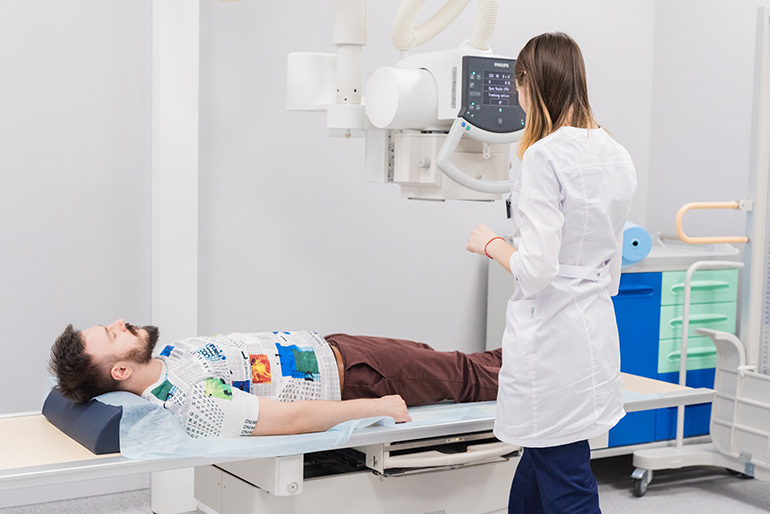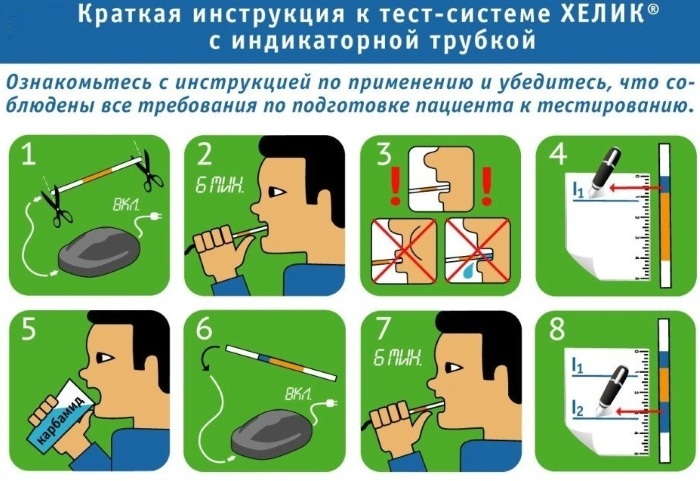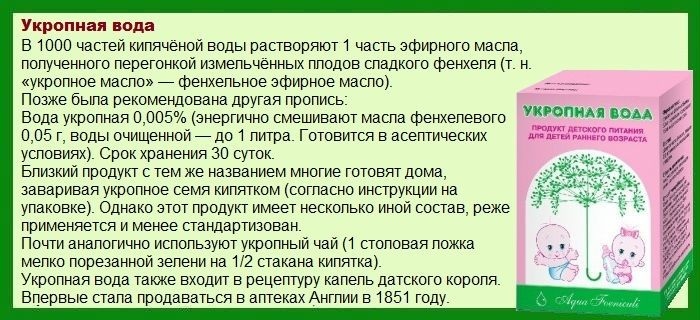Content
- What is a baby's milk tooth flux
- Reasons for the development of flux
- Symptoms, distinctive features
- How to confirm the diagnosis
- Why is periostitis dangerous?
- First aid
- Treatment of the disease
- Medicines
- For rinsing
- Antibiotics
- Anti-inflammatory drugs
- Folk remedies
- Homeopathic remedies
- Operation
- Consequences if untreated
- Tooth flux video
In medicine milk tooth flux in a child it is called periostitis. Dental disease experienced by preschool children. Pathology causes serious discomfort and pain in the baby. The flux of a milk tooth without timely therapy is dangerous for the entire small organism. A photo on the Internet is convincing proof that you cannot do without medical assistance.
What is a baby's milk tooth flux
Periostitis (milk tooth flux) in children is a pathological condition in which a purulent inflammatory process develops in the periosteum region. The disease is accompanied by severe painful sensations, an abscess forms on the gum.
In medicine, the following forms of periostitis are distinguished:
| Name | Description |
| Acute form | The disease is accompanied by pronounced symptoms. |
| Chronic periostitis | The flux in a child is characterized by a sluggish course, in most cases arises as a result of improperly performed therapy of acute periostitis. The same goes for ineffective treatment. |
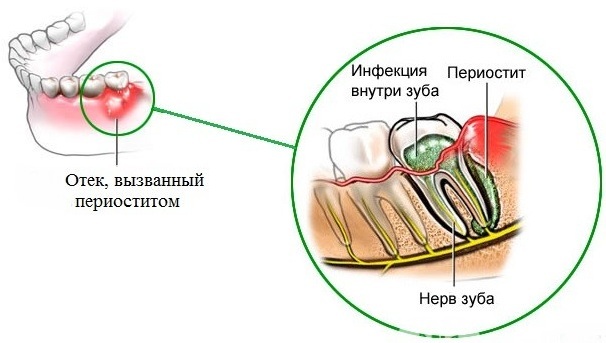
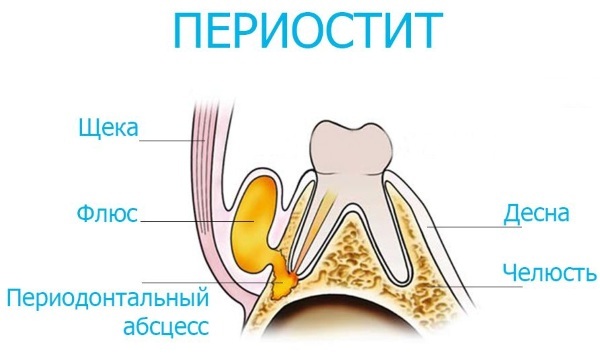 As the pathological processes progress, even if there is no soft tissue edema, the infection spreads to nearby areas. The entire periosteum is gradually affected. The danger of the gumboil also lies in the fact that a deeply penetrated infection will damage the rudiments of permanent teeth. In the future, the child will have damaged teeth, a disturbed process of their eruption and location.
As the pathological processes progress, even if there is no soft tissue edema, the infection spreads to nearby areas. The entire periosteum is gradually affected. The danger of the gumboil also lies in the fact that a deeply penetrated infection will damage the rudiments of permanent teeth. In the future, the child will have damaged teeth, a disturbed process of their eruption and location.
Reasons for the development of flux
Flux in a child (photo from open sources is not a basis for a diagnosis, the picture will only show what the disease looks like) provoke numerous factors, which the dentist will help to determine:
- non-observance of oral hygiene;
- untimely or incorrect treatment of caries;
- mechanical damage to the gums;
- diseases of the ENT organs;
- inflammatory process on the surface of the gums;
- non-professional tooth treatment;
- hereditary predisposition;
- active infectious diseases in a small organism;
- the formation of a cyst at the root of the tooth;
- hypothermia of a small organism;
- tartar formation.
If you do not teach your child to follow simple rules of personal hygiene, namely to brush your teeth, caries will appear, as a result of which the periosteum will suffer. The inflammatory process will lead to the appearance of a flux.
The enamel of a milk tooth is easily and quickly destroyed under the influence of various factors. The infection that provokes the flux easily penetrates into the deep layers of dental tissues, which leads to the development of a purulent inflammatory process.
Small children who get to know the world pull everything into their mouths. Any damage to the soft tissue will allow the infection to enter the gum through the wound. The provoking factor is also sore throat, pharyngitis, adenoids or inflammation of the glands. Infectious agents penetrate the gum pockets and provoke an inflammatory process. Without therapy, a flux appears.
Periostitis cannot be ignored by a dentist, since there is always a risk of complications. Timely diagnosis and therapy will eliminate inflammation and prevent secondary infection.
Symptoms, distinctive features
The clinical picture when a flux appears in a child will allow the dentist to establish an accurate diagnosis and choose the most effective treatment.
Periostitis in children is accompanied by the following symptoms:
- the cheek swells, in some situations the chin;
- swelling of soft tissues, the mucous membrane around the affected tooth;
- body temperature rises;
- there is a general weakness and lethargy in the child;
- an unpleasant odor occurs from the mouth;
- the lymph nodes increase on the part of the developing inflammatory process;
- the child is worried about a strong aching pain syndrome, especially when chewing or pressing;
- an abscess forms on the gum at the base of the tooth.
Children with the appearance of a milk tooth gumboil do not feel well, refuse to eat and are capricious. Timely diagnosis of the disease will help prevent serious complications.
How to confirm the diagnosis
A dentist will help diagnose the flux in a child. The specialist examines the little patient. Establishes a preliminary diagnosis, taking into account the child's complaints and the information received from the parents. If necessary, laboratory diagnostic methods and radiography are prescribed. The results obtained will help the dentist to choose the most effective and safe treatment for the child.
Why is periostitis dangerous?
The flux in a child (photos of pathological processes are presented later in the article) is dangerous because the infection that provoked the inflammatory process enters the bloodstream.

A small organism does not react with a high temperature, as it happens in an adult. Parents notice the disease already at a late stage of development, when the child's condition is critical.
First aid
Periostitis without timely diagnosis and treatment provokes serious complications. For this reason, it is important for parents to look after the health of their child's teeth. If flux appears, immediately consult a dentist. If this is not possible in the near future, you must remember the basic rules of first aid.
The algorithm of actions for periostitis in a child is as follows:
- Rinse your mouth with chamomile decoction or water with the addition of 1 tsp. soda 2-3 times a day.
- Lubricate the swollen gums with iodine using a cotton swab.
- Apply a cold compress.
You cannot give your child medications on their own. Elimination of symptoms will lead to misdiagnosis and chronicity of the inflammatory process.
There are certain actions that absolutely cannot be done if a child has a flux:
- Warm up the affected area, apply warm compresses. Heat activates pathogenic flora, which will lead to its growth and reproduction. Increase the inflammatory process and symptoms of periostitis.
- It is not recommended to actively rinse your mouth. During water procedures, pathogens are spread throughout the oral cavity. The risk of getting them into the gastrointestinal tract also increases. The local inflammatory process will develop into a general damage to the whole organism.
It is important to visit a dentist as soon as possible so that a specialist can prescribe adequate treatment. Flux in children occurs often, while the disease belongs to the category of recurrent pathologies. If periostitis periodically manifests itself in a child, a thorough medical examination should be carried out, since the cause may be a serious concomitant disease or weak immunity.
Treatment of the disease
The flux in a child (a photo of a purulent lump will help to preliminarily understand what is happening to the body) is treated with complex methods. Dentist is responsible for diagnostics and therapy. It is important not to open a self-formed abscess. If the infection enters the bloodstream, the child will need additional therapy and consultation with other specialized doctors. The risk of complications also increases.
Medicines
Drug therapy for periostitis in a child is selected individually for each a small patient, taking into account the established diagnosis, individual characteristics of the body and present complaints. It is important to take medications strictly, observing the established dosages, in order to reduce the likelihood of side effects and complications.
For rinsing
At home, rinsing the mouth is carried out with antiseptic agents that reduce the symptoms of the flux.
| Name | Application | Contraindications |
| Chlorophyllipt | Dilute 1 tbsp. l. alcohol tincture with warm water (200 ml). Rinsing should be done 2-3 times a day.
|
|
| Rotokan | Rinsing the mouth is carried out for 1-2 minutes 2-3 times a day for 2-5 days. |
|
| Miramistin | Rinsing or irrigation of the oral cavity is carried out 3-4 times a day. The duration of therapy is 4-10 days. | Individual drug sensitivity. |
Antiseptics alleviate the condition of a small patient due to the fact that they accelerate the process of outflow of pus and promote the processes of regeneration of damaged tissues.
Antibiotics
Antibacterial drugs act directly on pathogens of pathogenic flora. Therefore, it is important to comply with the dosage and treatment regimen.
Flux in a child (photos are presented in the article for review, they will allow you to suspect an inflammatory process and immediately go to the hospital) is treated with the following means:
| Name | Application | Contraindications |
| Amoxiclav | Pediatric dosage depends on the patient's body weight. The child is prescribed 20-40 mg / kg per day. The course of treatment lasts 5-14 days.
|
|
| Lincomycin | The dosage for small patients ranges from 30 to 60 mg / kg. In severe situations, the drug is administered intravenously at 10-20 mg / kg every 8-12 hours. |
|
| Amoxicillin | Children are prescribed 0.125-0.25 g 3 times a day. The duration of therapy is 5-12 days. |
|
Among antibacterial drugs, there are agents for topical use. We are talking about gel preparations that need to be applied to the affected area of the gums. Such drugs accelerate the healing process of damaged tissues, reduce pain syndrome (Metrogyl, Denta).
Anti-inflammatory drugs
Severe swelling of soft tissues and an intense inflammatory process with periostitis in children requires the use of anti-inflammatory drugs.
| Name | Application | Contraindications |
| Ibufen | Children's dosage depends on the age of the small patient and is 50-300 mg 3 times a day. The duration of therapy takes 3-5 days.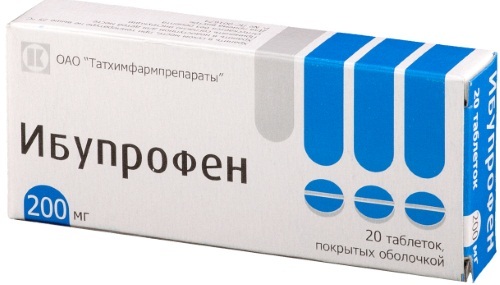
|
|
| Diazolin | The medicine should be given to children with food or after a meal. The dosage for small patients is 0.05 g 1-4 times a day. |
|
| Ketonal | The contents of the sachet are dissolved in warm water (0.5 tbsp.). The medicine should be given to children 3 times a day. The dosage depends on the patient's age and is 1-2 sachets. 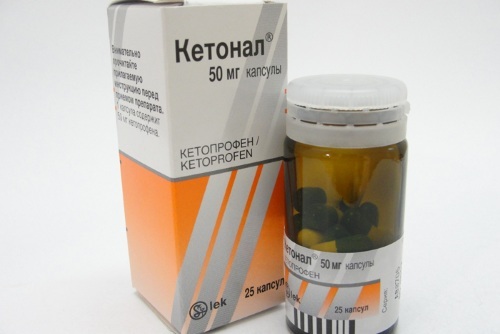 |
|
Medicines can be used as ointments or gels. But it is recommended to apply them after the outflow of purulent masses.
Folk remedies
Unconventional methods of healers and healers can be used with flux in children, but after consulting a dentist. Traditional medicine offers a large number of decoctions with which to caress the oral cavity to reduce the symptoms of periostitis in a child.
| Name | Recipe | Application |
| Herbal collection | Mix in equal proportions oak bark, St. John's wort and sage (2 tablespoons each). Grind all components and fill with hot water (1 l). Cool and drain. | Use the ready-made broth to rinse the mouth. Water procedures should be carried out in the morning and in the evening, preferably after meals. The medicine can be used up to 8 times a day. |
| Sage and green tea | Mix all components in equal parts. Fill with hot water (1 l). Insist for 30-40 minutes and drain. | Before rinsing, add 1 tsp to the solution. table salt. Sage and green tea relieve pain and swelling well, and also reduce the redness of soft tissues. |
| Calendula | An alcoholic tincture of calendula is used. It is recommended to dilute 5 drops of the product in warm water (1 tbsp.). | It is recommended to rinse the mouth with a ready-made product every 1.5-2 hours. Calendula reduces inflammation and redness of the soft tissues. |
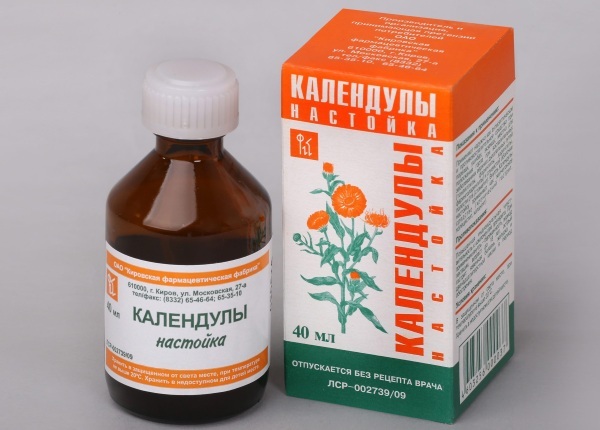
Salt and soda are popular remedies in folk medicine. The components are mixed with warm water, and the resulting solution is also used for rinsing the mouth.
Homeopathic remedies
Flux in a child can be treated with homeopathic remedies. But after a correctly established diagnosis by a dentist, and not from a photo from the network. All medications used must be prescribed by a specialist. Homeopathic remedies are used as adjuvant therapy along with traditional medicines. It is impossible to cure the flux in a child with such drugs alone.
The main group of homeopathic medicines is absorbed in the mouth, is made from milk sugar and looks like a small pea. Often such medicines are used in the fight against various pathologies of the gums and teeth. The active ingredients are mercury, belladonna, plantain.
Operation
In the absence of a positive result after drug therapy or in the event of serious complications, surgery is indicated for the small patient. Surgical treatment is carried out using several methods. The procedure is selected by a dentist or surgeon, taking into account the patient's condition and the complications present.
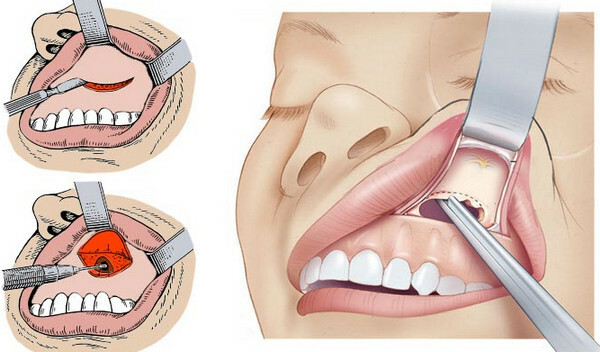
| Name | Description |
| Periostotomy | The affected gum is dissected in several places. The purulent contents are washed out. If necessary, an antiseptic treatment of the wound is carried out. Seams are applied. |
| Complete tooth extraction | The dentist or surgeon removes the itching, treats the hole with medications, and then opens the purulent lump. |
| Combined operation | Itching is removed, the upper part of the periosteum is dissected and the purulent contents are washed out. |
After surgery, the patient is additionally prescribed medications that will help prevent the re-development of the inflammatory process and complications.
Consequences if untreated
In a neglected state, a flux in a child can cause the development of serious complications:
| Name | Description |
| Osteomyelitis | The disease is characterized by a purulent inflammatory process that affects the bone marrow and surrounding tissues. |
| Phlegmon | Pathological changes appear in the neck and head. Cellulitis is an infectious and inflammatory disease in which the fiber of the neck is affected. As the pathological processes progress, the disease passes to the mediastinal organs. |
| Sepsis | Late therapy leads to the fact that pus enters the bloodstream and spreads throughout the body. Blood poisoning occurs, which also leads to serious complications. |
The infection that enters the bloodstream from the flux spreads throughout the body. If pathological agents enter the brain, the likelihood of patient death due to complications increases.
The flux in a child can be prevented if you constantly monitor the health of children's teeth. It is enough not only to remember the useful recommendations of a dentist, but also to visit a specialist for preventive purposes. A photo of periostitis on the Internet will allow you to suspect a disease and immediately go to the hospital. It is important to strictly observe medical prescriptions in order to prevent complications and re-development of the inflammatory process.
Tooth flux video
Tooth flux. Treatment, symptoms, complications:

